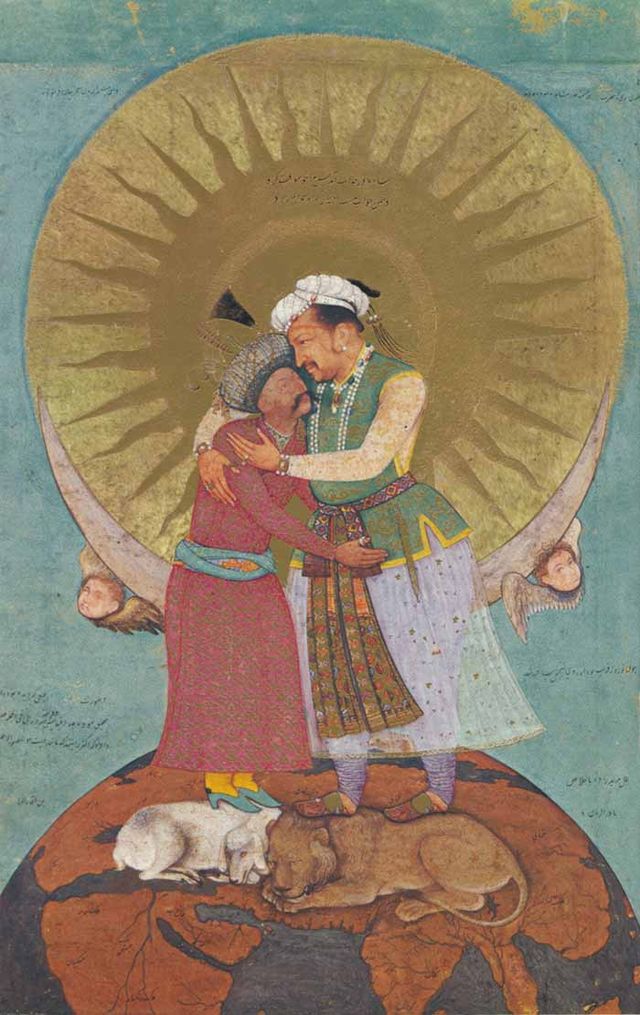Multani
SENIOR MEMBER

- Joined
- Sep 2, 2010
- Messages
- 2,419
- Reaction score
- 2
Lakh lanat on all these stupid Mughal Emperors-
be gentle bro
Follow along with the video below to see how to install our site as a web app on your home screen.
Note: This feature may not be available in some browsers.

Lakh lanat on all these stupid Mughal Emperors-



That is the propaganda in india only. All acedemic people outside india acknowledge that Urdu in its current form was developed by Turk-persian aristocracy during mughal empire. Hindi is an artificial language that was based on urdu and corrupted with Sanskrit vocabulary. The indigenous languages before the development of urdu were Khari boli, Magadhi, Haryanvi, Rajasthani, Bhojpuri etc. which are still alive in Haryana, UP, Bihar and Rajasthan. The language which is now called Hindi is merely a corrupted form of Urdu with heavy Sanskrit vocabulary developed by Brahmins.

hubba hubbaMore pictures guys .. Mughal court

True, also Indo-European is just a classification whereas Oghuz people(branch of Turkic language) and their language was an actual people, not just a classification concept that is fabricated.Unlike Indo-european languages that branched off atleast 5000 yearsn ago, the modern Turkic languages spoken in West and central asia are hardly separated a 1000 years ago, they are still very close to each other. An anatolian turk can still make sense of an ughur turk without even learning ughur language. You my friend are mixing apples with oranges, the time frame is totally different here.



A manuscript depicting the Mughal Emperor Jahangir and the Safavid Shah Abbas I; and the qualities of Mughal - Safavid Relations.


He did lose territory, right under his nose in Deccan where he spent is last 25 years fighting the Marathas. He was unable to hold Maratha lands and forts and they kept changing hands multiple times.
But yes the whole system just collapsed after his death and Maratha forces were in Delhi playing kingmaker within 6 years...

Unlike Indo-european languages that branched off atleast 5000 yearsn ago, the modern Turkic languages spoken in West and central asia are hardly separated a 1000 years ago, they are still very close to each other. An anatolian turk can still make sense of an ughur turk without even learning ughur language. You my friend are mixing apples with oranges, the time frame is totally different here.

No, Moghuls weren't Central Asian, they were Pakistani
 As is she, they mixed with locals and became local, simple.
As is she, they mixed with locals and became local, simple.
Only early Mughals were Turkic, look at the pic of Sultana Begum she is South Asian as much as any of us, look at the last pic of Bahadur Shah Zafar he is darker than I am.As is she, they mixed with locals and became local, simple.



Well bro it doesn't matter now does it.
Post your pic and we'll see how light you are

Not all were looters and oppressors. Some were very good, others were very bad. Its a mixed bag actually. And I agree with @hinduguy , regardless of good or bad, we must study all history.
I agree. Though after a couple of generations, Mughals were basically Indians/locals.
Close, linguistically. Germans, British, Irish, French, etc. are as well. So are Koreans, Japanese, Chinese, etc. But they have their own identity and histories. Now, how can a Anatolians all the way in Turkey lay claim to early Mughals(Basically Uzbeks)? Or early Turkics in Iran, who I'm guess came from Central Asia as well.
Only thing that unites them is literally language and Islam, which is Arabian influence. Other than that, most Anatolians are basically converts in to the Turkic group.

